Oslo, Norway
- arthur18068
- Jul 13, 2024
- 6 min read
July 10-23,2024
After much delay, we arrived in Oslo by train late at night from Stockholm in light rain. Pretty wiped out, we taxied to The Thief, our hotel in a new section of Oslo on the harbor that used to be a sleazy area of thieves. Very cool and hip hotel as the name suggests. We had a 9pm snack in the dining room and hit our beds exhausted. Renewed and refreshed next morning we headed out after a sumptuous buffet breakfast for a day of sightseeing on our own. We will have a Tours by Local guide tomorrow.
First off we headed to Frogner Park, the largest park in Oslo’s inner City. It is the site of Vigeland, a remarkable sculpture park with 212 bronze and stone sculptures created by one man, Gustav Vigeland, over 23 years. They are all nude human figures— men, women, children, old and young in various poses and postures. They are all incorporated into the walks and walls of this main section of the park. The park itself is one of the most beautiful I have ever seen—simple, elegant with esplanades of tall trees, rose and flower gardens, ponds, etc. Just very simple and beautiful. Vigeland, by the way, designed the Noble Peace Prize medal.
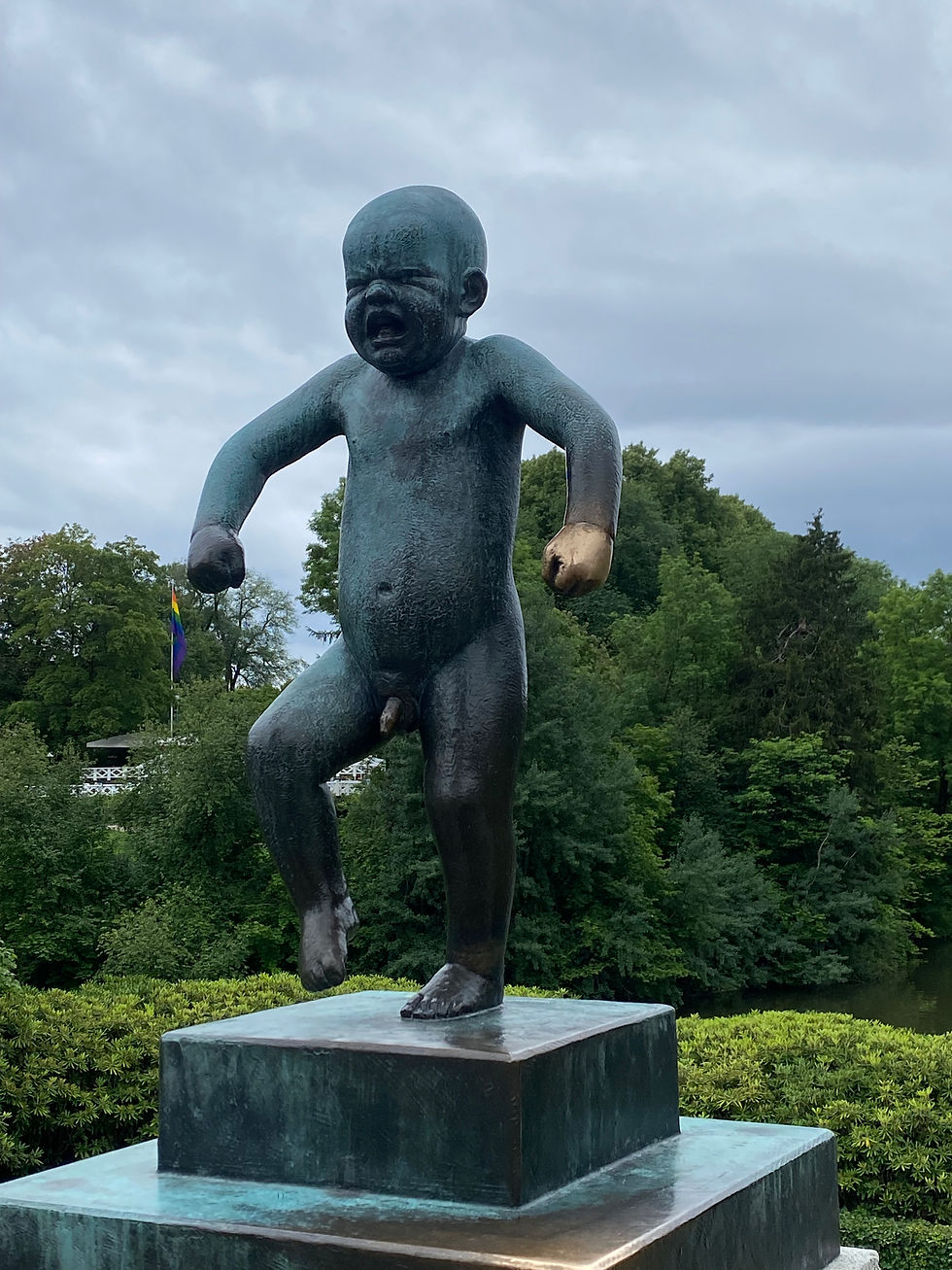

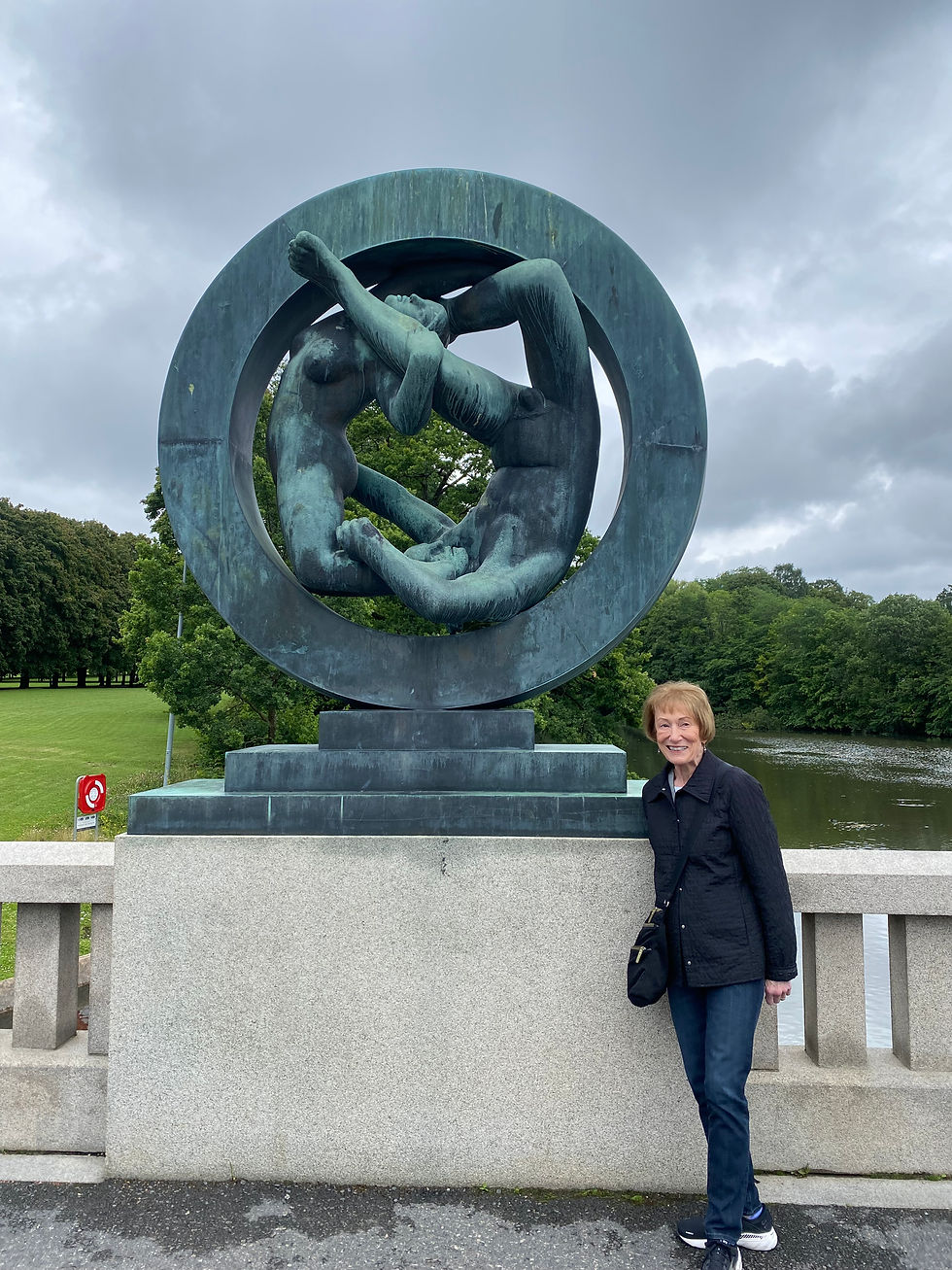

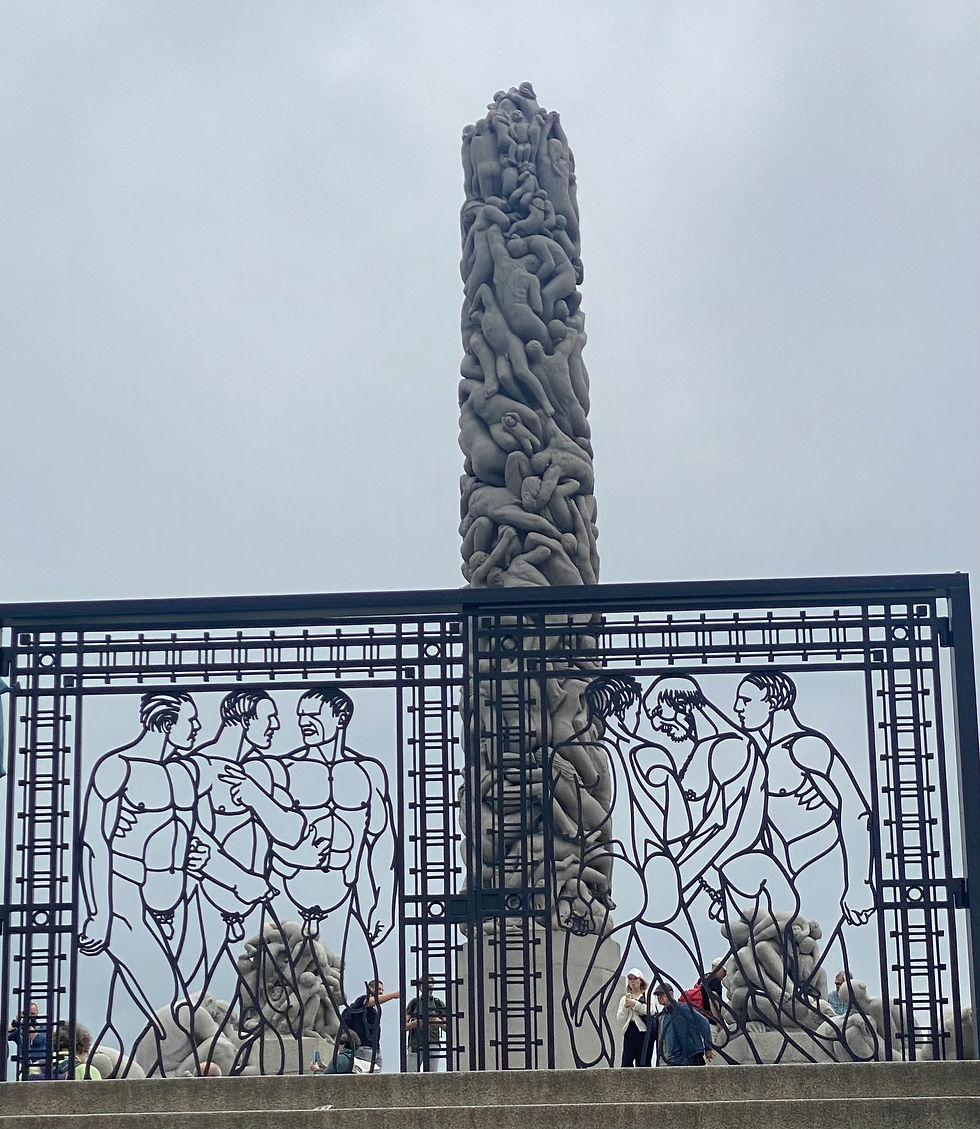
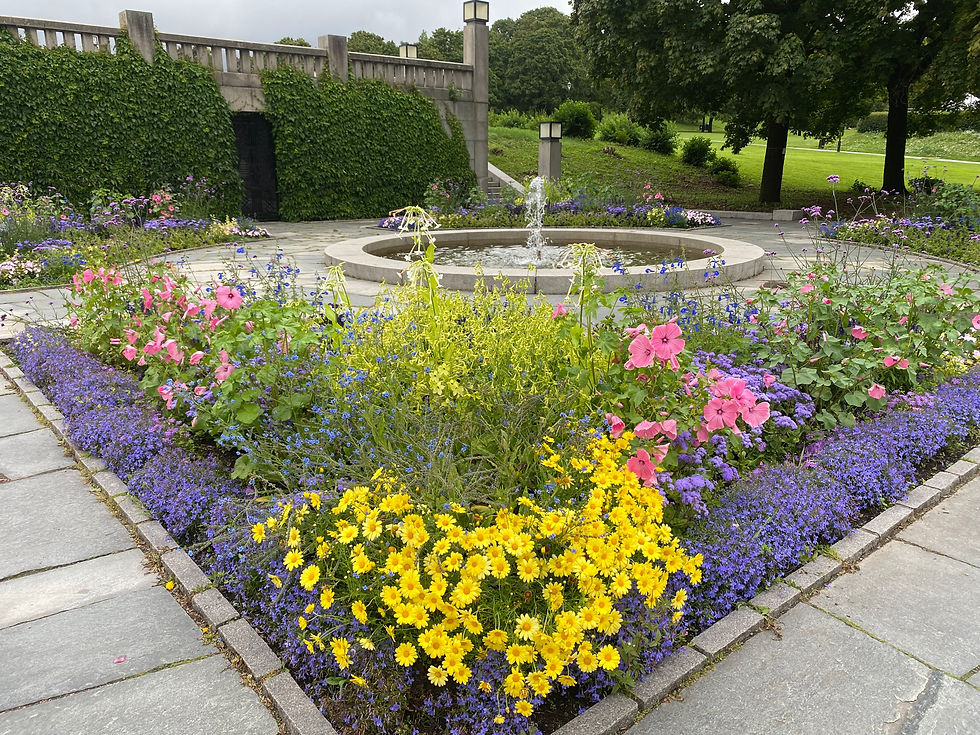

From there we headed to Karl Johans Gate, which connects east Oslo to west Oslo and is lined with cafes, shops, theaters and large iron cauldrons of flowers all along. We are surprised at how much more alive Oslo is than Stockholm (our previous stop). Frankly, I expected Oslo and Norway to be a pale personality sister to Stockholm, and at least to us, it’s the exact opposite. It’s lively and hip, and cool actually. The architecture is a mix of old traditional and modern designs. The best thing is that in most of the city there are no cars. Parking is prohibited so it’s very hard to bring a car into town.


We walked back to the area where we are staying which is called the Tjuvholmen section, a complex of very modern apartment buildings, our hotel, and the Astrup Fearnley contemporary art museum, designed by Renzo Piano. It sits at the end of the harbor and there is a long promenade along the harbor with restaurants and places to sit and linger. It’s a great use of the waterfront. There are lots of people everywhere, another sharp contrast to Stockholm. Our hotel room overlooks a canal with private power boats docked alongside. We visited the art museum which was sparsely filled with uninspiring contemporary art. The building is much more impressive than the art.

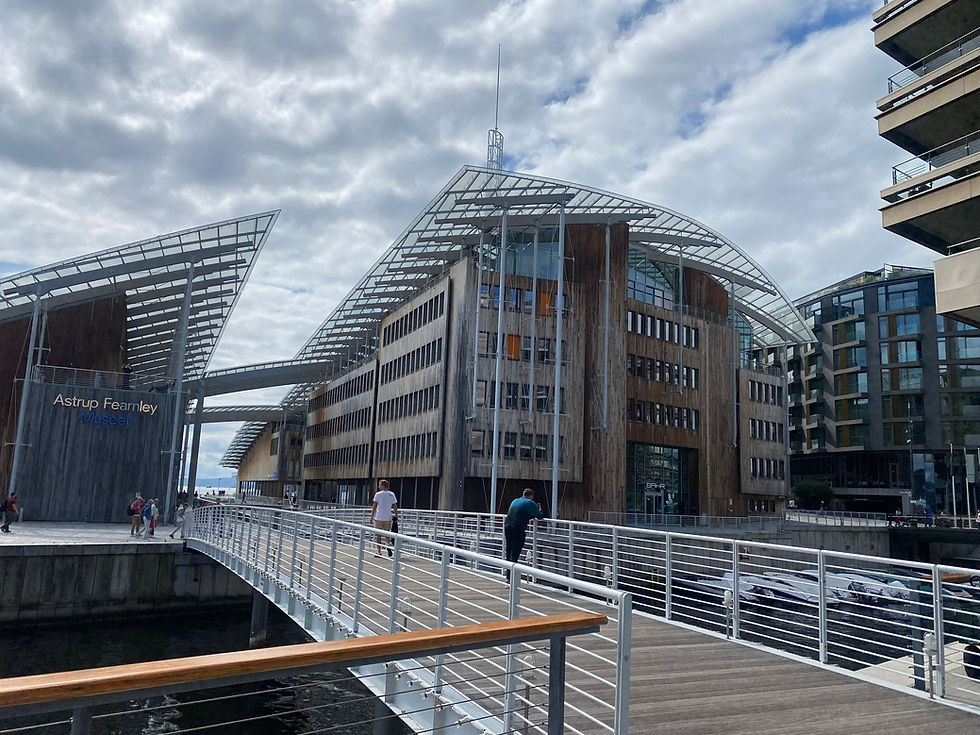
For dinner we headed to Seaport in the Sorenga section. This is another marvelous use of the waterfront with a long granite slab that anchors a swimming area of the sea and with slanted pyramids for lazing. Very attractive modern apartments are along the long promenade with steps down to the sea. The weather was balmy and beautiful so we ate outside for a nice dinner and then a walk along the promenade, stopping for gelato along the way. We had great views of the Munch Museum and the Opera House. By the way, last night and today we had Uber drivers from Somalia, Palestine (2), Philippines and Iraq.


Friday morning we met Diana our local guide at 9am and set off to dig deep into the city. As it turned out we kept going, after she left us after lunch, until 5pm, having walked almost seven miles. And what a city we saw. It turns out our neighborhood, besides once being a den of thieves was also adjacent to the main shipping area, including oil depots etc. Some bright visionaries decided the waterfront would be better served as a venue for apartments, restaurants, promenades and the like. We walked past the Nobel Peace Museum and then to City hall where the Peace prize is awarded. Although Alfred Nobel was a Swede and never set foot in Norway, he decided the Peace prize should be awarded here because Sweden had been a war-like country, and Norway had never waged war. The Great Hall of City Hall where the award ceremony is held is very imposing with large paintings (one is the largest in Europe) depicting various aspects of Norwegian history, including the invasion and occupation by the Nazis.
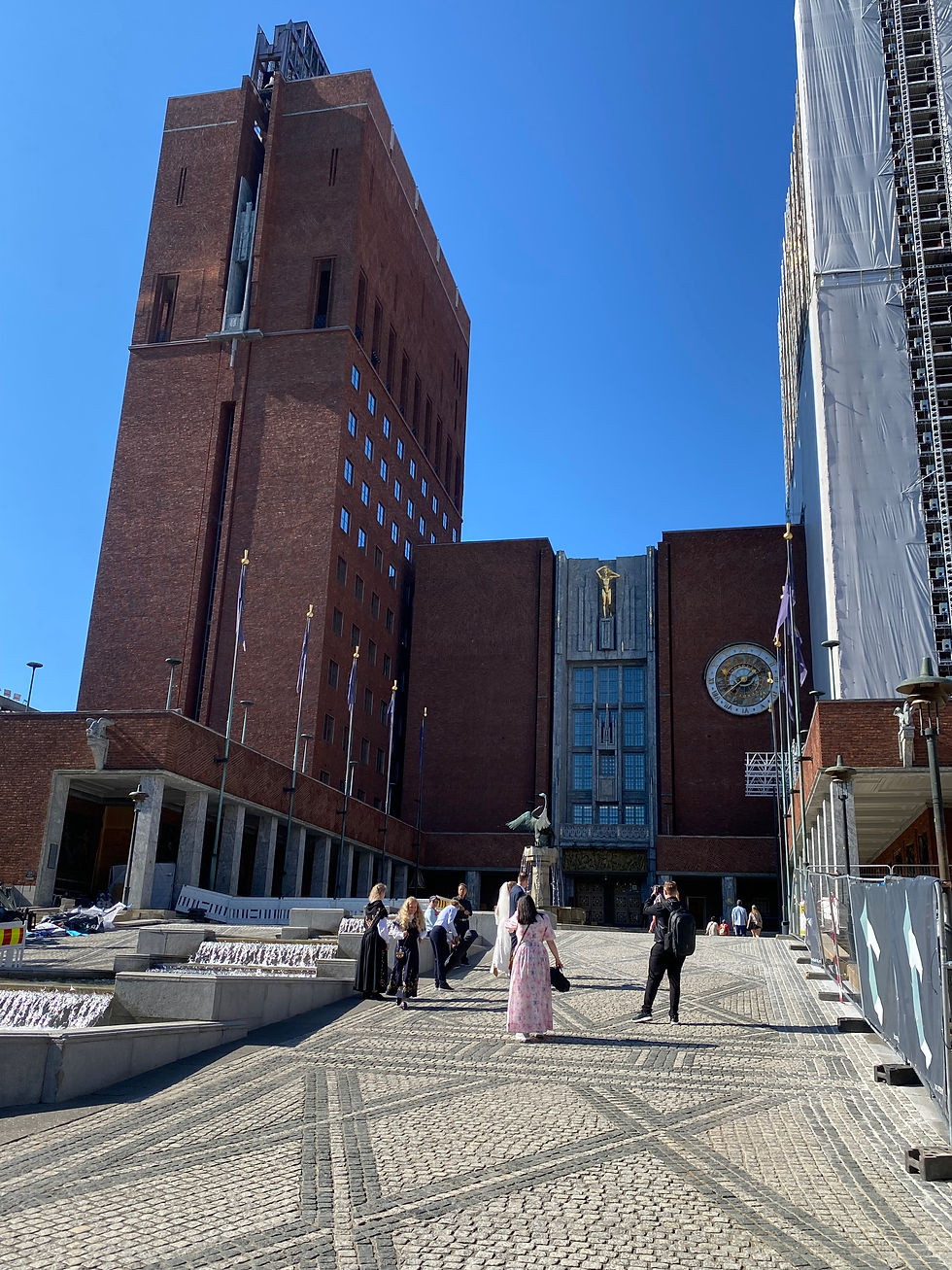

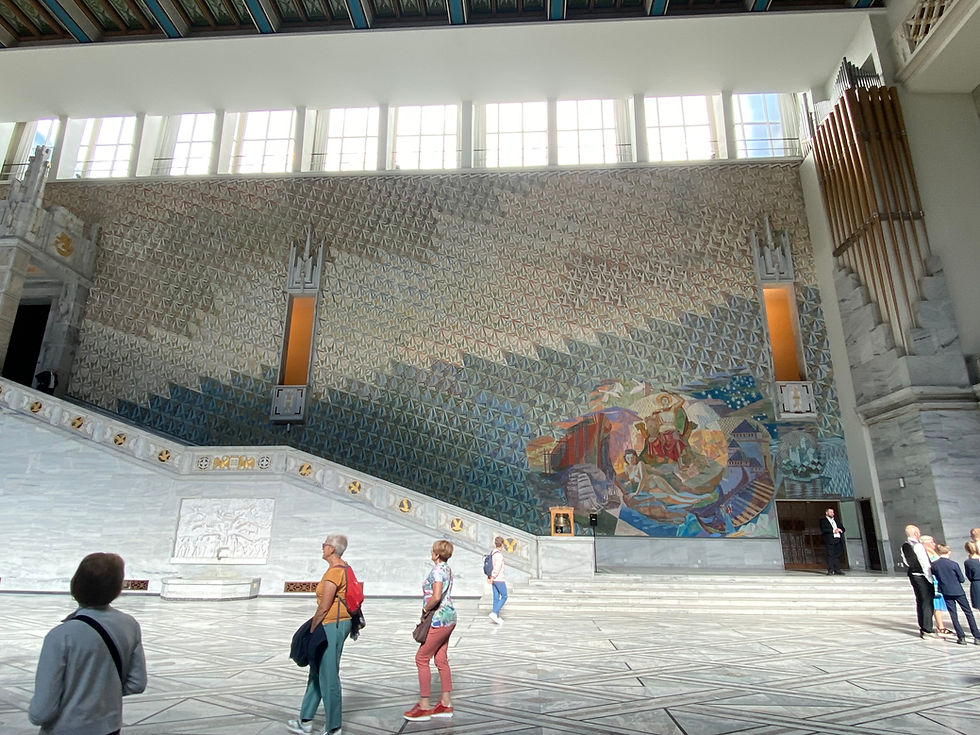
From there we walked to Parliament which features a round assembly (at least from the outside since we didn’t go in) and next to it the Grand Hotel where Nobel Peace prize winners stay and come out on a balcony to wave to crowds who march by with torches. In the cafe there Ibsen and Munch hung out. It’s a short walk up the major street to the University and Law School (very classic Greek style architecture) and up the street we could see the Royal Palace.
We spent a good hour at the National Museum of Art which features better Munch paintings than the Munch Museum (according to our art dealer friend, David Tunick). It is here that we see what is considered the best version of Munch’s famous Scream painting, and it is vivid and beautiful. They have several other excellent Munch paintings which we lingered over. Another impressive holding is a 13th century Nordic tapestry that looks good as new and quite handsome. It personifies the months of April and May which certainly suggests the other months, now lost, were also illustrated. Another exhibit housed the dresses of the first and current Queen.


We then marched to the city’s fortress that dates from the 12th century and which was where the Nazis entered the city. It’s been added to over the centuries and is still used for state occasions. It has great views of the harbor and coastline as you would imagine a fortress should have.

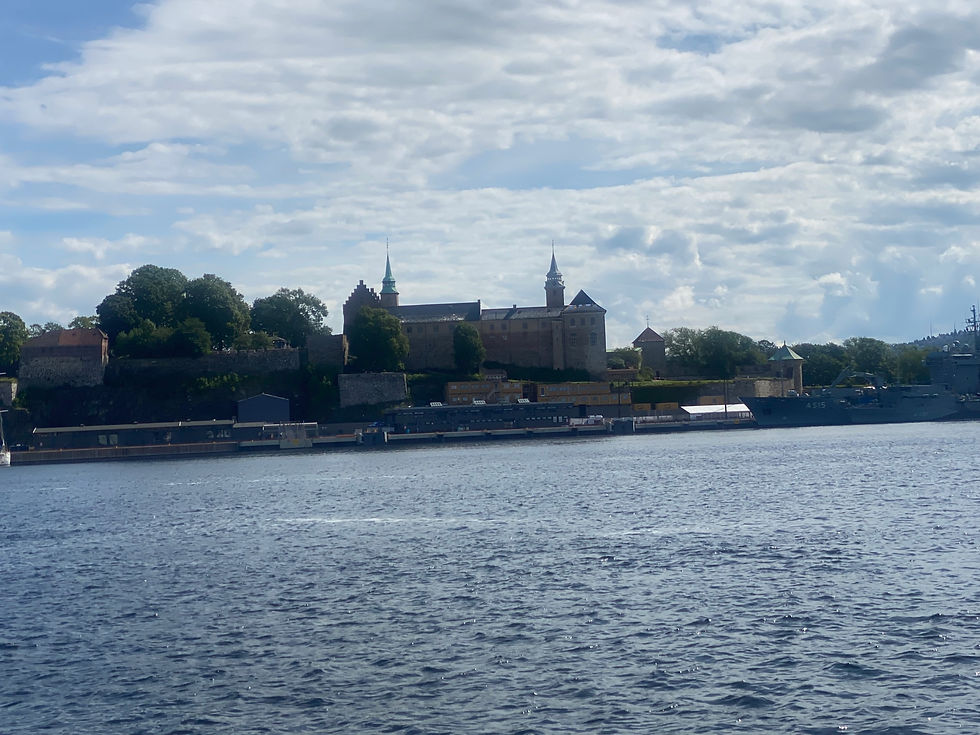
The city is very walkable as proven by the fact we walked from one end to the other, passing through old neighborhoods and new ones, to the Opera House which is quite spectacular and relatively new. Clad in white Carrara marble, it is supposed to connote two glaciers colliding. It also has amazing steps up the entire side to a rooftop plaza and can hold up to 10,000 people outdoors for concerts and 1200 in the main auditorium. On the way to lunch Diana walked us across the street to an impressive relatively new library which reminded us of the impressive library we saw in Seattle.
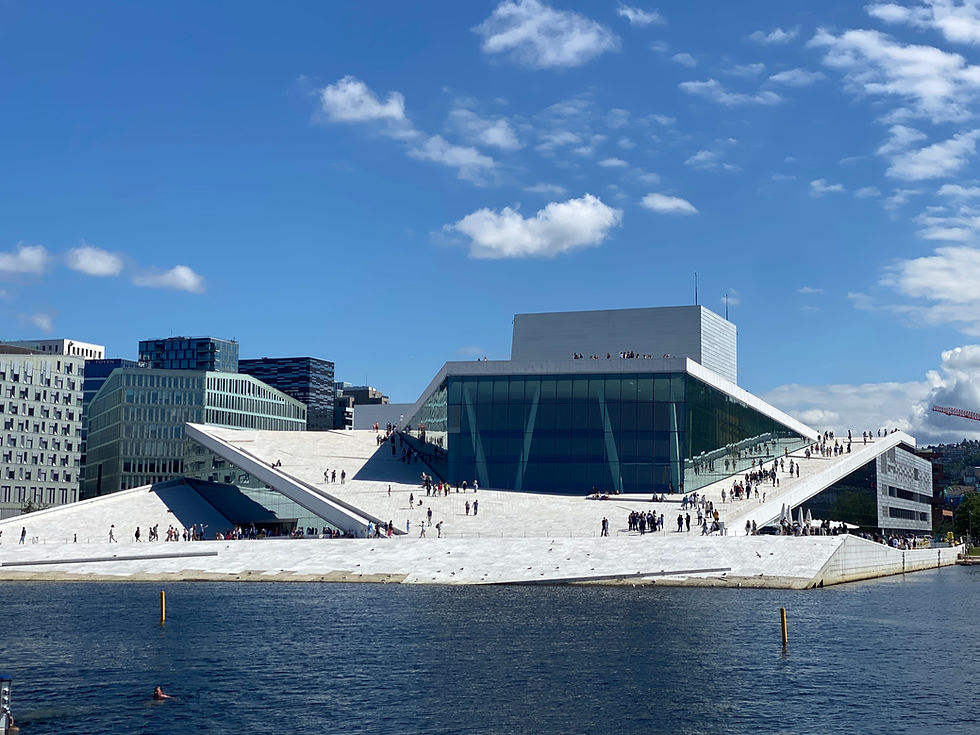
I must say by then we were ready to sit and eat some lunch. Diana took us to an excellent cafe nearby in another neighborhood. The more we walk Oslo the more we like it. So many neighborhood parks, usually with some unique play equipment for children. The architecture is modern and interesting, with unusual facades, cut out chunks and stick out bulges, some in contrasting colors. The city is full of surprises.
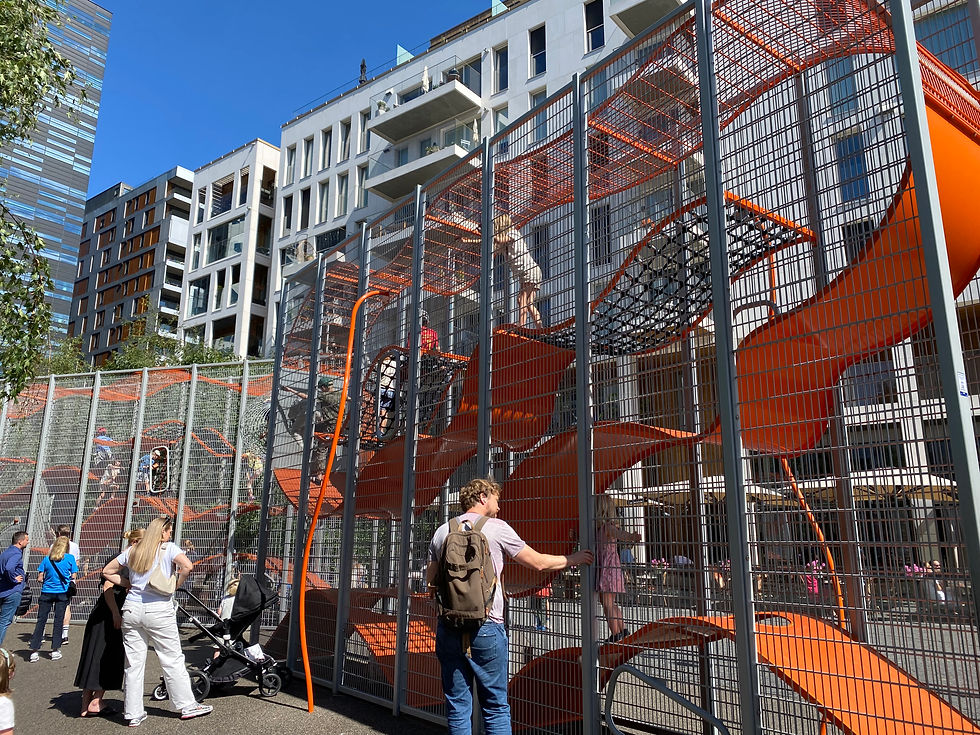
At lunch we talked about living in Norway. The citizens pay high taxes (average 36-52%) but every child born receives $150/month put into a bank account until age 18; free public universities, and free healthcare for children and retirees. Norwegians seem quite content with this arrangement. Norway has more electric vehicles per capita than any other country. There are major subsidies, tax abatement, and free charging stations. We see lots of Teslas, Mercedes, and some Chinese models. And one more thing that we’ve never seen anywhere else—they have saunas in flat-bottom boats in the harbor. So you can take a sauna by the dock or take it out into the harbor and dive into the sea to cool off. We didn’t do this.
After crisscrossing the city, we briefly collapsed, showered, and headed out to dinner at a close by restaurant—Lofoton, which had been recommended, but we found it to be mediocre and disappointing with careless service. We took a walk along the promenade and out to the end where people were swimming at 8:30pm with the sun still shining. We topped the dinner off with after dinner drinks in the rooftop bar of the hotel. I think we will sleep well tonight!
We did. Our last morning in Oslo we took a 15 minute ferry to a peninsula across the harbor. There are several museums there, but we skipped them all and just did a loop walk, admiring the large mostly white houses with shiny black curved metal roofs. This is also the site of the Royal Norwegian Yacht Club. We caught the next ferry back and had a good lunch at the National Museum Cafe, doing Oslo “Bests & Worsts.” We head to our cruise ship in a couple of hours. We loved Oslo.






It was wonderful to read your words about Oslo. It's never been high on my travel list but now I'm much more curious about this cosmopolitan, walkable and lovely city.